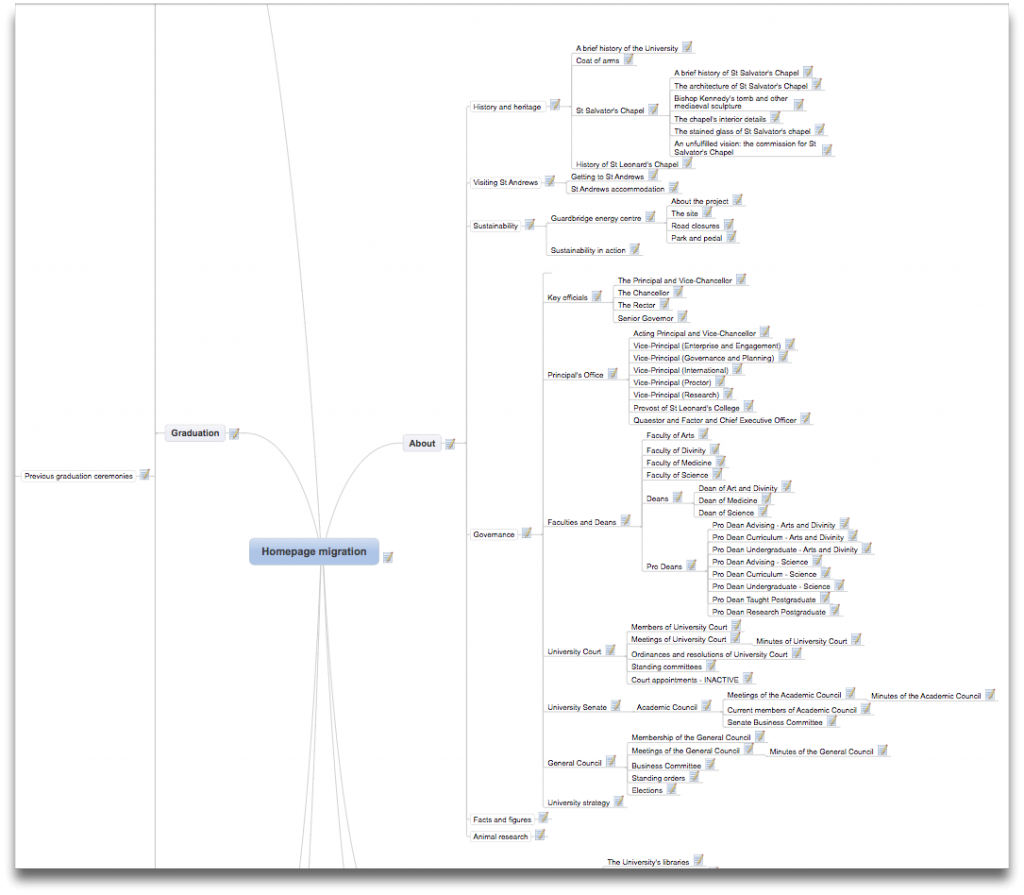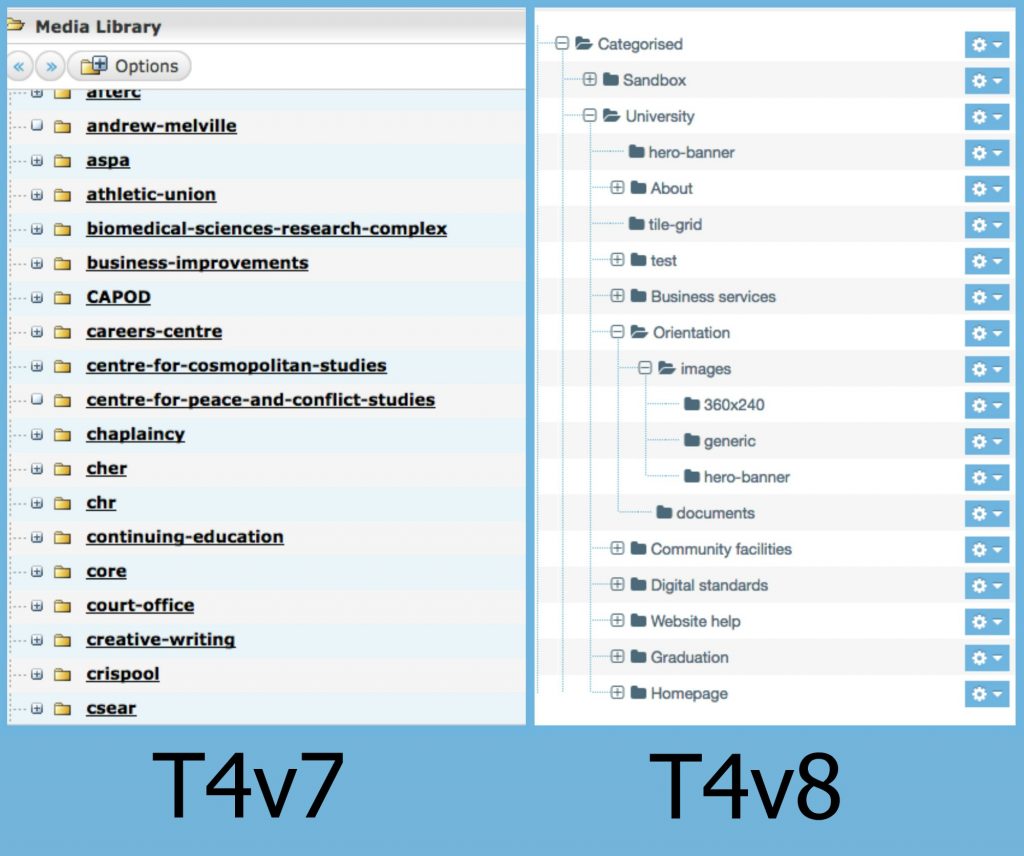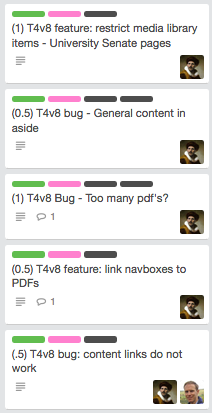Beginning the migration to T4v8
We are now able to upgrade our website content management system, TerminalFour, to the latest version, T4v8. In a previous post, we explained how we planned to move to T4v8, and now that the plan is in action, here is how the process has been going.
Building the IA
In our plan, we decided the first phase was to migrate content from the University homepage, about section, community facilities, business services, graduation, orientation, digital standards and website help.
The first step we took was to redevelop the website information architecture (IA) in v8. Using a mindmap of the current website architecture, we added each page and subpage for the first phase into v8, making sure the URI matched the same URI used in v7.

Building the IA first allowed us to more easily streamline the content migration process and also helped ensure we didn’t leave out any pages.
Reorganising the media library
Moving to v8 has given us the chance to improve the backend organisation of the media library. In v7, the media library folders don’t necessarily correspond to the IA of the webpages. This means that finding the correct media item for a webpage is like finding a needle in a haystack.
Therefore, we have reorganised the media library in v8 to correspond exactly with the IA. This was a long process involving locating and downloading the correct media items for each webpage and then re-uploading them to the new media library architecture.

In addition, this was a good opportunity for us to review the filenames and metadata for each media item we uploaded to v8. Many filenames did not meet our filename standards, so we fixed these and included more descriptive metadata and SEO keywords.
Adding metadata
In addition to adding metadata for each media item, we also took the opportunity to include metadata for each webpage. This involved entering a descriptive title of less than 56 characters along with a brief page description of less than 150 characters.
These metadata titles and descriptions will show up in search engine entries for each webpage.
Running into bugs
One of the inevitable aspects of a content migration process is running into bugs and other issues with v8. These issues were often picked up by the content team who then report each instance to development.
Examples of bugs we have found include:
- Inability to edit metadata once entered the first time
- Navigation boxes not linking in preview
- Content links not working

Other issues we’ve run into include discovering features that were not accounted for during development. These features, which work in v7, still need to be built by development in v8.
Examples of features we need to build include:
- Ability to add external links on hero banners
- Ability to link navigation boxes to PDF files
- Ability to restrict both pages and media library items to only staff and students (not external)
When the content team has run into a problem, we identify it as either a ‘bug’ or ‘feature’ issue, create a Trello card, and assign it to the development team. Webpages which depend on these issues being resolved are blocked until the bugs are fixed or the feature is developed.
Making executive decisions
Migrating the webpages has also given us the chance to review content and decide whether its format should change. One example of this came about when we tried to migrate the facts and figures webpage. This webpage uses a unique content type that would have been difficult to rebuild in v8. We decided that we would redesign the page using our longform format instead, meaning that we wouldn’t have to spend time recreating a content type that is currently only found on one webpage.
Another executive decision we had to make was when we came across the previous graduation addresses. In order to build these pages, we would need to develop a content type that would only be used on a select number of pages. Instead, we decided that we would externally link each address to the corresponding news archive page. Eventually, these news articles will be hosted on WordPress, at which time we will also review whether any articles are so outdated that they should be removed altogether. Therefore, by externally linking to these pages, we have saved ourselves the tremendous effort of designing a complicated content type and have prepared for the WordPress news migration.
Last thoughts
Although it may seem like a bad thing, running into bugs now is actually incredibly useful. This means we should have most of the issues and features working for when we begin the next migration phase.
In addition, reorganising the media library and adding better descriptions and metadata will make navigating the backend of T4 much more intuitive.
At the moment, the pages built in v8 will look identical to those from v7 from an external point of view. However, we are hoping that eventually down the line v8 will allow us to develop and design new features, making our website even easier to read and use.
